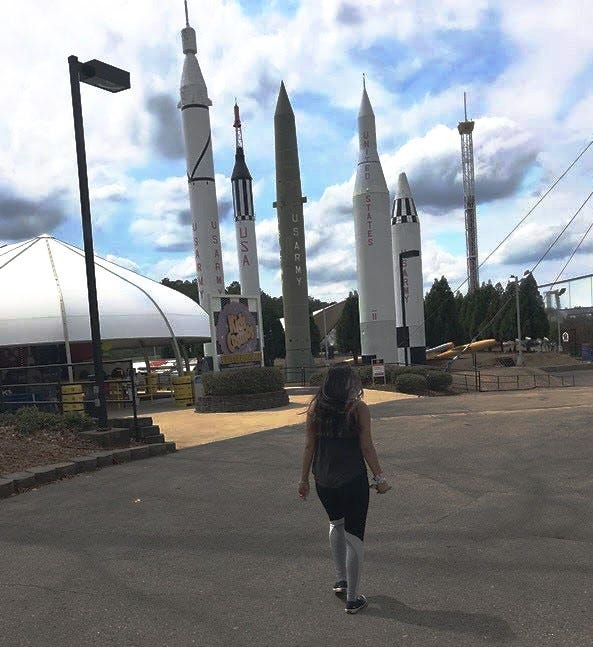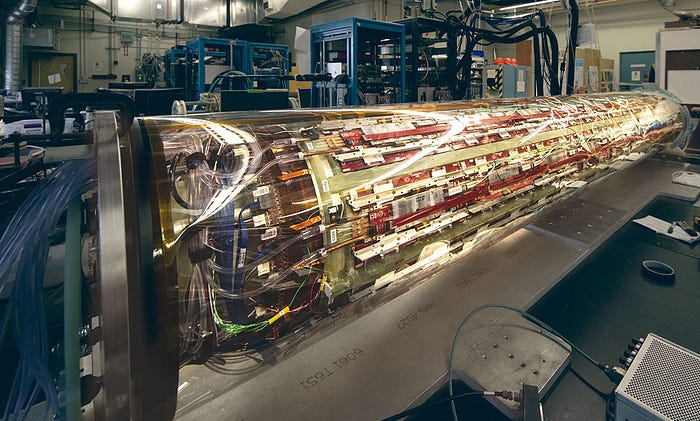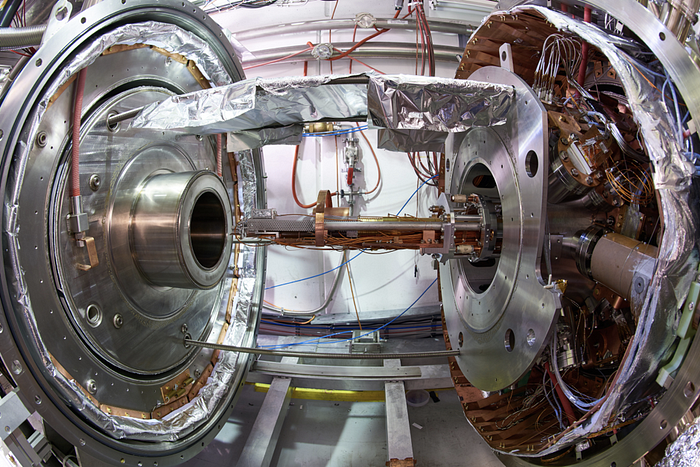Antimatter — The Key to Achieving Interstellar Travel
Chemical rockets have taken us as far as they could. It’s time to switch to something that can take us where we need to go.

TL;DR
- Chemical rockets are inefficient for interstellar travel but antimatter is a better choice because it results in much higher speeds and it’s more efficient
- Antimatter is the same thing as matter but with opposite charges, found by Paul Dirac when his equation gave him answers of positive and negative energy
- Antimatter is formed through the process of β+decay and is stored in different traps using electric and/or magnetic fields
- When antimatter and matter collide, it’s called annihilation and the result is a completely efficient explosion where both particles destroy each other and all that’s left is energy
- Despite the difficulty, antimatter has the potential to help humanity achieve interstellar space travel in the future

Space travel has been part of my life ever since I was little. I didn’t get to watch the Apollo missions as a kid like some people. The last Shuttle mission was the Atlantis in 2011 and I was barely 10 when the Shuttle program ended for good.
But I did get to grow up with the space industry constantly talking about Mars. In the industry, kids my age are called the Mars Generation, since it’ll be someone from my generation that will be the first human on Mars. 🚀
Yet, in my years of researching and talking to people who are more involved in the space industry, it’s clear that our current chemical propulsion systems are simply not efficient enough to get us to where we need to be.
I expand on this in another article, if you’re interested.
Sure Mars can be feasible with chemical propulsion (not efficiently) but how about further?
NASA’s Deep Space probe would take over 81,000 years just to get to the closest star, Proxima Centauri, which is only around 2.24 light-years away.
Imagine how long it would take trying to explore beyond our galaxy if that’s how long it takes just to get to the next star system over. Is that even a smart thing to do at this point?
With chemical propulsion, yeah I don’t think so. 🤨
Matter… but not Matter
Luckily there’s a new kind of propulsion that has the space industry, and a handful of space nerds like myself, researching like crazy.
The idea of using antimatter to power our spacecraft.
Now coming from a First-Principles' way of thinking, I think it’s important to ask “WHY antimatter of all things?” And honestly, it’s a great question considering it’s so new and most people don’t even know what it is.
Antimatter is like matter with a reverse charge. Just like how we’re all made up of particles like electrons and protons, antimatter is made up of antiparticles like positrons, which are electrons with a positive charge, and antiprotons.

A very interesting element of antimatter is that when it interacts with matter, they completely destroy each other, making a completely energy-efficient collision. This process is called annihilation💥.
To give you an idea of how powerful this could be: one gram of antimatter interacting with an equal amount of matter would result in a 20 kiloton bomb which gives you an explosion around the size of the explosion that destroyed Hiroshima.
Yeah, when I say it’s powerful and efficient, I’m literally not kidding. Sounds exactly like something that could power a rocket, right? Keep this thought in mind…
The weird, or more so intriguing question surrounding antimatter stems from the Big Bang Theory. Now scientists predict that after the Big Bang, there should have been equal amounts of matter and antimatter created, but look around… where’s the antimatter? This is called the Asymmetry Problem and it’s a question that physicists are still trying to answer.
Okay, so from this, we can also get another question: if there’s no antimatter that we can see naturally occurring in our world, how do we even know it exists?
Great question, but there’s actually an answer to this one.
Dirac’s Discovery
In the 1900s there was a growing idea among scientists that predicted that particles could have more kinetic energy moving than at rest.
The physicists concluded that for this to be true, there had to be negative energy. Now, to us, this sounds bizarre, but stay with me, it’ll make sense in a bit.
This is where British physicist, Paul Dirac comes into play, 1928. Dirac was trying to put together two of the most major equations in physics, the theory of relativity and quantum mechanics. But the equation he came up with didn’t quite give him the answer he was expecting.

See, Dirac’s equation describes the behaviour of an electron moving at a relativistic speed (talk about a crazy amount of work) and this is where the weird part comes in, the equation had two answers:
- one for an electron with positive energy (this is the normal answer he wanted to get)
- and then an answer for an electron with negative energy
Negative energy. 🤯
If you got negative energy in your homework, you’re going to assume that you got an incorrect answer.
And if I’m being honest, you did. You got the wrong answer, because, in your high school physics class, you’re dealing with just matter.
Dirac was not. He concluded that for the equation to result in two equal but opposite energies, each particle of matter would need to have a corresponding “antiparticle”, the exact same particle with a reverse charge, which would lead the antiparticle to have negative energy.
Think of it as a math concept instead: the root of any perfect square (ie. 4,9) will always give you different answers. You’ll get a negative answer and a positive answer.
This is exactly how Dirac’s equation worked to give us the idea of antimatter.
Okay, so now we’ve covered that. Again, there’s another question: we know this exists, but how do we even get to the point where we can observe these explosions?
And yet again, that’s a great question and luckily, I have an answer for you!
Decaying One Thing to Make Another
Before we make things explode, we actually need to know how antimatter is produced. Most annihilation studies are done between an electron and a positron, so we can focus more on this process.
Positrons are most commonly made through beta plus (β+) decay. General β decay occurs when there are too many protons or neutrons in a nucleus, so one of them decays into something else.
β+ decay is when the proton decays into a neutron, positron, and neutrino. From this, researchers can use the antimatter produced to start going through with annihilation.

Annihilation 101
Something you may have picked up on is that annihilation occurs when antimatter touches matter, so it’s quite hard to study or use since you literally can’t touch it with anything.

For this, researchers at CERN, the European Organization for Nuclear Research, made certain traps in their Antihydrogen Laser Physics Apparatus (ALPHA) facility.
- For charged particles: Researchers use Penning traps which are like small accelerators. There are magnetic and electric fields to keep the antiparticles from touching the walls.
- For non-charged particles: They can’t be held in electric fields since there’s no charge. Instead, they use magnetic traps. These traps are made of two coaxial coils and an octupole magnet (a magnet with 8 poles). These components create magnetic fields that get stronger in every direction resulting in stronger magnetic fields towards the walls and a weaker force towards the center, where the antiparticles get trapped in.
Now when an antiparticle, more specifically, antihydrogen, is detected in the chamber in ALPHA, the fields will deactivate and the antiparticle will fall towards the chamber wall and undergo annihilation with the matter in the wall.
When annihilation occurs, it emits electromagnetic energy (gamma-rays) with a frequency we can pick up with gamma-ray detectors.
This energy is what makes this collision so powerful, in addition to the fact that annihilation 100% efficient.
This all sounds super complicated and it really is, no sugar coating that. And of course, with a process this complicated, there are sure to be some drawbacks when trying to use this type of propulsion in a rocket.
Costly Complications
Since antimatter doesn’t exactly occur naturally in our world, or universe that we know of, producing it is not cheap. In fact, it’s quite the opposite.

Just one gram of antimatter takes around $62.5 billion to produce💰.
In addition to this, it takes in more energy to produce and store antimatter than the energy that’s returned from annihilation. Also, imagine trying to store this on a spacecraft, you would need to have all the traps on board too.
So with all this, what the does future even look like for antimatter if there even is a future?
The Potential
Okay, come on, of course, there’s a future for antimatter spacecraft. Yes, it seems like a hard task but, and there are already people working towards this.
Of course, NASA already has teams looking into this but with NASA’s budget (which isn’t at all close to the budget they deserve), they’re going to need help from private companies to push this idea further.
Also just a reference for the speeds we’re about to look at, keep in mind that the NASA Shuttle can only go about 28,000 km/h.
- Positron Dynamics (Ryan Weed) — They’re planning on making a rocket that’s fueled by antimatter propulsion that can go up to 115,872,768 km/h to help expand human presence and achieve interstellar travel.
- Project Valkyrie (Charles Pellegrino and Jim Powell) — Project Valkyrie is a design for an antimatter spacecraft that will initially use a small amount of anti-matter to get to about 20% the speed of light and then use full annihilation to reach up to 92% the speed of light or 992,911,104 km/h.
Now compared to the Shuttle, that sounds like a better deal, right?
Yeah, definitely a better deal.
This might not sound feasible but over 50 years ago, getting a man on the Moon sounded like a sci-fi movie, but we did it. Climbing Mount Everest sounded impossible but we did it.

The research is here. We have the people willing to do it. I think antimatter is the answer scientists need to help achieve interstellar travel🌌
Thank you so much for reading!
Hey, my name is Krupal Patel, a 17-year old space tech researcher and an Innovator at The Knowledge Society. Please don’t hesitate to reach out to me if you have any questions, all my links are here.
